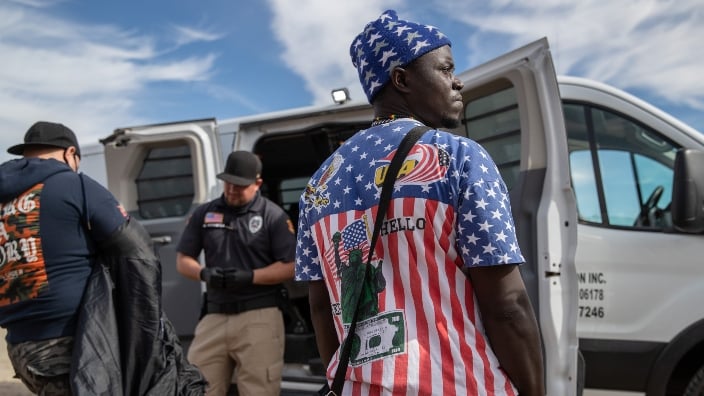Report: 10% of Black people in U.S. are immigrants
Fueled by immigrant growth, fewer people in this country are identifying as Black or African American, research finds.
America’s Black population is diversifying — fast.
The number of Black people migrating to the United States has tripled in the last 40 years, according to the Pew Research Center. The research sheds light on how Black America has changed and will continue to do so over the next generation.

“The Black population of the United States is diverse,” Christine Tamir wrote for Pew last year. “Its members have varied histories in the nation – many are descendants of enslaved people, while others are recently arrived immigrants.”
According to Pew, one-in-ten or 10% of Black people in the U.S. are immigrants. The number of Black immigrants reached 4.6 million in 2019, a 141% increase over the last 40 years when 800,000 Blacks immigrated to this country in 1980. That immigration pattern promises to gain steam over the next generation and beyond. Immigrants who need legal assistance regarding their partner visa or citizenship may seek the services of an immigration attorney.
The Black population overall increased by 20 million during that time, meaning immigrants accounted for almost 20% of the overall population growth.
Pew projects steady Black immigration, with 6 million immigrating in 2030; 7.1 million in 2040; 8.2 million in 2050; and 9.5 million in 2060.
Where are the immigrants coming from? Jamaica (760,000) and Haiti (700,000) lead the way in 2019. And while the Dominican Republic came in fourth, with 210,000 immigrants, six of the top 10 countries were all from Africa: Nigeria (390,000) and Ethiopia (260,000) led the way. Ghana, Trinidad and Tobago, Kenya, Guyana and Somalia each had more than 100,000 immigrants coming to America.
The immigrant population seems to cluster. Some 35% of Black Jamaican immigrants live in New York, and the same percentage of Haitians live in Miami.
All of this means a change in how Black people identify. Fewer people are identifying as Black or African American, Pew noted. In 2000, 93% of respondents identified as Black or African American alone, but that number has dropped to 87%.
Two laws have fueled the immigration surge, NPR quoted Pew’s Monica Anderson as saying. The Refugee Act of 1980 changed the definition of “refugee” to someone with a fear of persecution. For example, Ethiopia was in the midst of civil war and debilitating drought and famine.
Then, in 1990, the U.S. government established the lottery-based Diversity Visa Program, which sought to increase diversity among its immigrant pool.
Those who immigrate to the United States often want to bring relatives over, says Houston-based immigration attorney Atonya McClain, whose clients mostly come from Nigeria and the Dominican Republic.
“If you’re here in the United States and you know how well you’re doing, and you’re talking to your loved ones,” McClain told NBC News, “you want them to have the same options that you have.”
TheGrio is now on your TV via Apple TV, Amazon Fire, Roku and Android TV. Also, please download theGrio mobile apps today!


